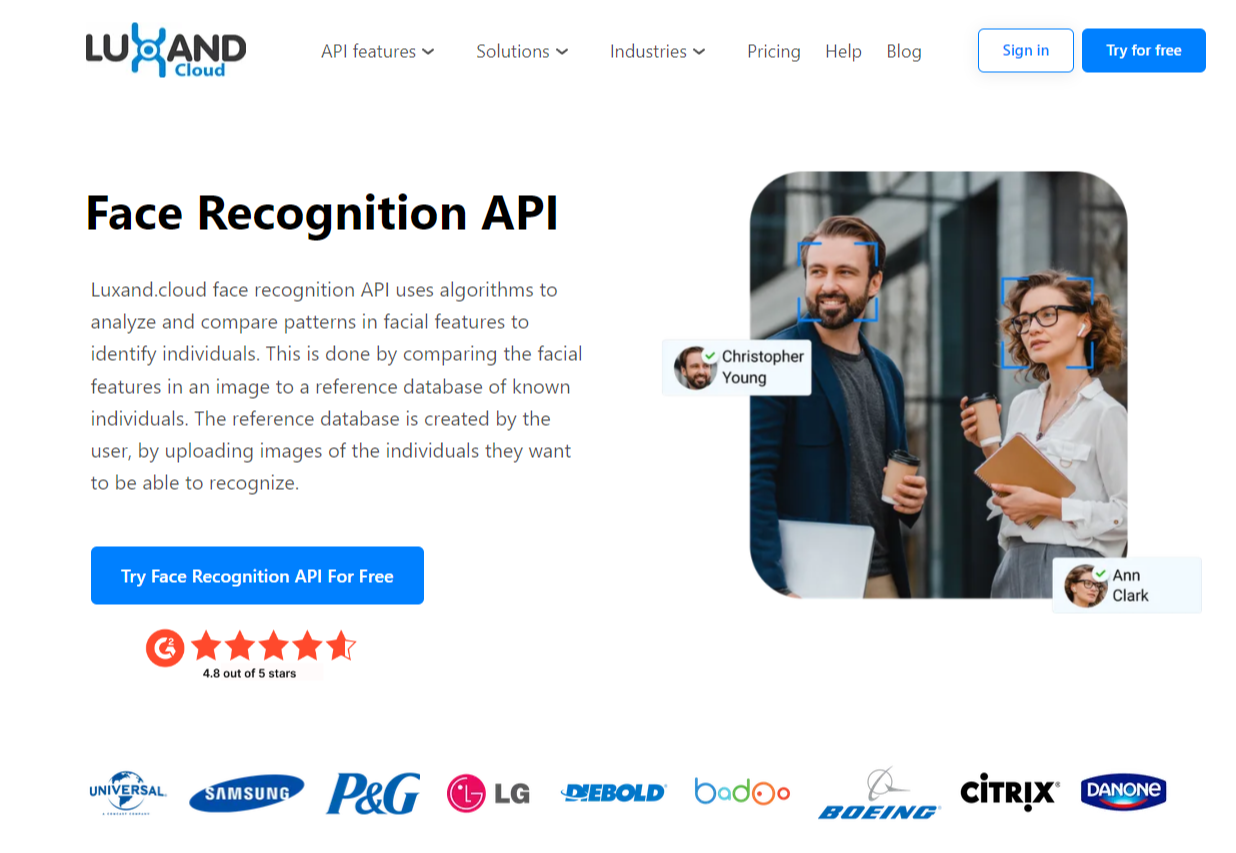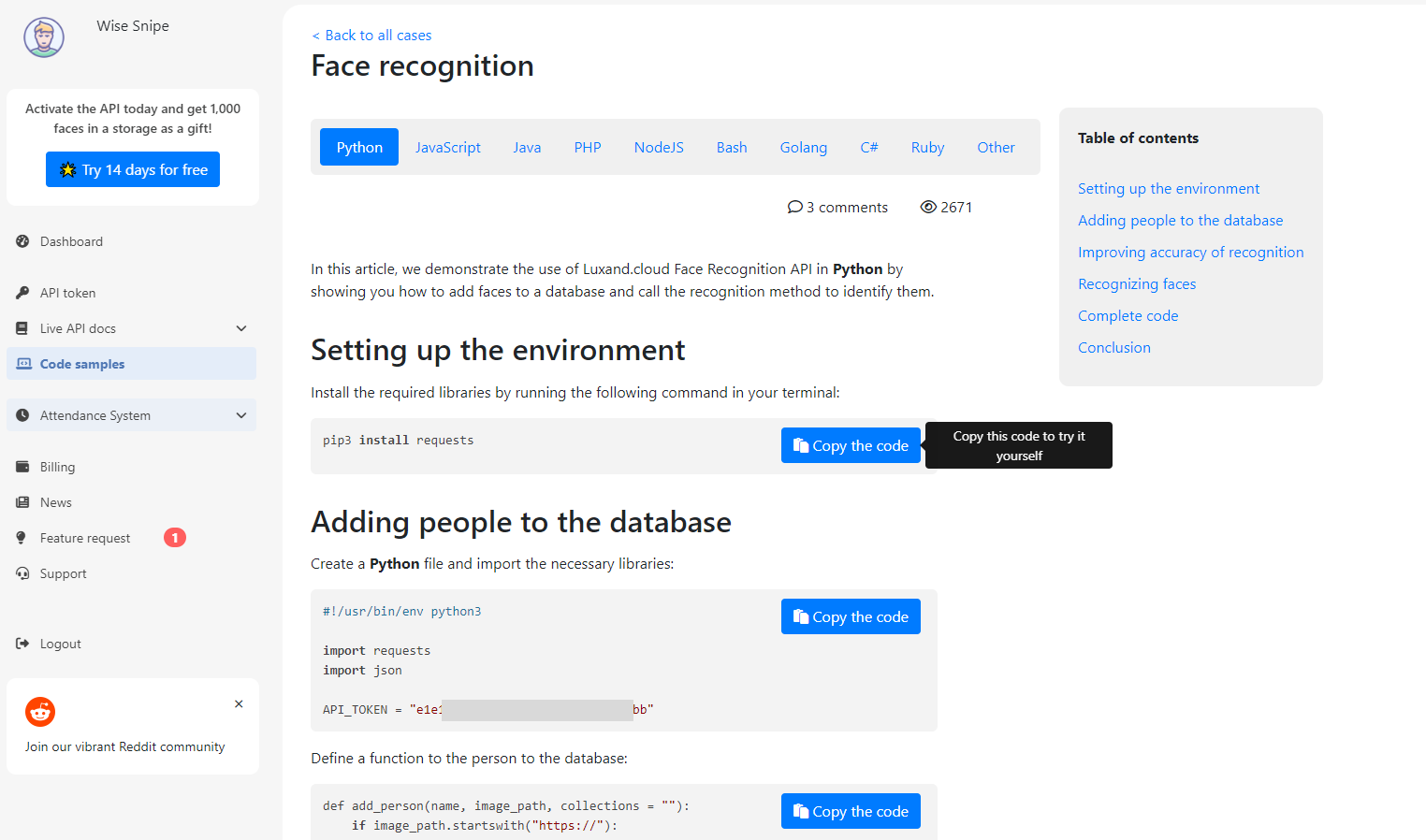
Face Recognition API for Developers
Face recognition APIs offer a streamlined solution for developers, providing ready-to-use tools that can be easily integrated into your applications. These APIs handle the complex algorithms and data processing behind the scenes, allowing you to focus on building innovative solutions that leverage the power of facial recognition. In this blog post, we’ll explore what face recognition APIs are, how they work, and how to choose the right one for your needs. Whether you’re looking to add simple face detection to an app or implement a comprehensive facial recognition system, this guide will help you get started on the right path.
Understanding Face Recognition APIs: An Overview

Face recognition APIs have become a pivotal tool for developers looking to integrate powerful facial recognition capabilities into their applications. These APIs offer a streamlined way to leverage advanced algorithms for identifying and verifying human faces in digital images and videos, all without needing to build complex machine learning models from scratch.
How Face Recognition APIs Work
At their core, face recognition APIs function by processing images to detect and analyze facial features. When an image is uploaded, the API first identifies and locates faces within it, usually by mapping key facial landmarks like the eyes, nose, and mouth. These landmarks are then used to create a unique "faceprint"—a digital representation of the face that can be compared against other stored faceprints for verification or identification. The API sends back structured data, such as the coordinates of detected faces, confidence scores, or even emotional analysis, depending on the specific capabilities of the API.
Key Features and Capabilities
Face recognition APIs come with a variety of features designed to cater to different needs. Common capabilities include basic face detection, which identifies the presence of faces in an image, and face verification, which matches a face in one image to another to confirm identity. More advanced APIs might offer features like emotion detection, age estimation, or the ability to recognize multiple faces in a single image. Additionally, many APIs support real-time processing, allowing developers to implement facial recognition in live video streams, a crucial feature for security and monitoring applications.
Popular Use Cases
The versatility of face recognition APIs makes them applicable across a wide range of industries. In security, they are used for access control systems that rely on facial verification to grant entry to secure areas. In retail, businesses use these APIs for personalized customer experiences, such as recognizing repeat customers and tailoring marketing efforts. Social media platforms utilize face recognition to help users tag friends in photos automatically. Beyond these, healthcare, banking, and entertainment sectors are increasingly adopting face recognition APIs for identity verification, patient monitoring, and even enhancing gaming experiences.
Choosing the Right Face Recognition API: An Overview
Selecting the right face recognition API is a critical step for developers aiming to incorporate facial recognition features into their applications. With numerous options available, making an informed decision requires careful consideration of various factors, from technical capabilities to cost and licensing.
Criteria for Selecting a Face Recognition API
When choosing a face recognition API, developers should begin by identifying their specific needs. Key criteria to evaluate include accuracy, speed, and the range of features offered by the API. For instance, some APIs excel in detecting and recognizing faces in diverse lighting conditions, while others might offer specialized capabilities like emotion detection or age estimation. It’s also important to assess the ease of integration, especially if you’re working within an existing tech stack. Additionally, factors such as scalability, security, and compliance with data privacy regulations (like GDPR) play crucial roles in determining the right fit for your project.
Comparison of Popular Face Recognition APIs
To make an informed choice, comparing popular face recognition APIs can be incredibly useful. Major providers like Amazon Rekognition, Microsoft Azure Face API, and Google Cloud Vision each offer unique strengths.
Learn more here: Top Face Recognition APIs in 2024
API Pricing and Licensing Considerations
Pricing and licensing are also pivotal factors when choosing a face recognition API. Pricing models typically vary based on the number of API calls, the complexity of the tasks performed, or the level of service (such as free tier, pay-as-you-go, or subscription-based models). For example, Luxand.cloud offers a subscription-based model.
Developers need to consider the projected usage of the API to avoid unexpected costs. Additionally, licensing terms should be carefully reviewed to ensure compliance with the intended use of the API. For example, some APIs might have restrictions on usage in certain industries or geographical regions, or they might require additional fees for commercial use. Balancing these financial and legal considerations with the technical capabilities of the API will help ensure that the chosen solution is both effective and sustainable for your application.
Common API Functions
Face recognition APIs offer a range of functionalities that can significantly enhance applications by incorporating advanced facial recognition technology. Understanding these common functions—face detection and landmark identification, face verification and matching, emotion and age detection, and handling multiple faces in a single image—can help developers leverage these tools effectively.
Face Detection and Landmark Identification
At the heart of face recognition technology is face detection, a fundamental function that identifies the presence of faces within an image. This process involves scanning an image to locate and outline the regions where faces are present. Once a face is detected, landmark identification comes into play. This function maps key facial features such as the eyes, nose, and mouth, creating a detailed outline of the face. These landmarks are crucial for subsequent recognition tasks, as they provide a reference framework for analyzing and comparing facial features with high precision.
Face Verification and Matching
Face verification and matching are critical functions for applications that require confirming identities or linking faces across different images. Face verification involves comparing a detected face with a reference face to determine if they belong to the same individual. This is commonly used in security systems for authentication purposes. Face matching, on the other hand, compares multiple faces against a database to find potential matches. This function is essential for applications such as social media tagging, where the goal is to identify or suggest friends in uploaded photos.
Emotion and Age Detection
Advanced face recognition APIs go beyond simple identification to offer insights into a person’s emotional state and age. Emotion detection analyzes facial expressions to identify feelings such as happiness, sadness, anger, or surprise. This can be particularly useful for enhancing user experiences in interactive applications, such as virtual assistants or customer feedback systems. Age detection estimates the age of an individual based on their facial features, providing demographic insights that can be used in targeted marketing or personalized content delivery.
Handling Multiple Faces in a Single Image
Many real-world scenarios involve images with multiple faces, and a robust face recognition API must handle this efficiently. This function detects and processes each face within a single image, providing separate data for each individual. This capability is crucial for applications like event photography, security surveillance, and social media platforms, where images often contain groups of people. By managing multiple faces accurately, the API ensures that each face is individually recognized and analyzed, enabling precise data collection and analysis.
Luxand.cloud Facial Recognition API

The Luxand.cloud Facial Recognition API offers a cutting-edge solution for integrating facial recognition technology into your applications. Designed to provide robust and scalable face recognition capabilities, this API caters to a diverse range of use cases, from security and authentication to personalized user experiences and data analysis.
Introduction to Luxand.cloud Facial Recognition API
Luxand.cloud's Facial Recognition API is a cloud-based service that enables developers to incorporate advanced facial recognition features into their applications with ease. Leveraging sophisticated algorithms and machine learning models, the API delivers accurate and efficient face detection and recognition. It is designed to be flexible and accessible, allowing developers to focus on creating innovative solutions without needing to develop complex facial recognition systems from scratch.
Key Features and Capabilities
The Luxand.сloud API offers a comprehensive set of features tailored to various needs. Core functionalities include face detection, which identifies and locates faces within images, and face recognition, which matches detected faces to a database for identification or verification purposes. Additionally, the API provides advanced features such as emotion recognition and age estimation, enabling applications to gain deeper insights into users' emotional states and demographics.
Integration and Ease of Use

One of the highlights of the Luxand.сloud Facial Recognition API is its ease of integration. The API is designed with developer convenience in mind, offering straightforward documentation and a user-friendly interface. Whether you are integrating face recognition into a web application, mobile app, or other platforms, Luxand.сloud provides clear guidelines and code samples to streamline the development process. This accessibility helps developers quickly implement and deploy facial recognition features, accelerating time-to-market for new applications.
Scalability and Reliability
Luxand.сloud is built to handle a wide range of use cases, from small-scale projects to large enterprise solutions. Its cloud-based infrastructure ensures high availability and scalability, allowing applications to grow and adapt without performance issues. The API is also designed with reliability in mind, providing consistent performance and robust error handling to ensure smooth operation in various scenarios.
Privacy and Security
In an era where data privacy and security are paramount, Luxand.сloud prioritizes the protection of user information. The API complies with relevant data protection regulations and implements strong security measures to safeguard sensitive facial data. This focus on privacy helps ensure that user information is handled responsibly and securely.
Conclusion
In conclusion, leveraging a face recognition API can be a game-changer for developers looking to add cutting-edge features to their applications. By understanding the available options and aligning them with your project’s needs, you can harness the power of facial recognition to create impactful, intelligent solutions that enhance user interactions and operational efficiency.
As we wrap up our exploration of face recognition APIs, it’s clear that these powerful tools offer transformative potential for a wide range of applications. From enhancing security measures to personalizing user experiences, the capabilities provided by face recognition APIs can significantly elevate the functionality and sophistication of your projects.
Face recognition APIs, such as Luxand.сloud, simplify the integration of advanced facial recognition technology into your applications. They provide developers with robust features like face detection, landmark identification, and emotion analysis, all while offering user-friendly interfaces and comprehensive documentation. These APIs make it possible to implement sophisticated facial recognition systems without the need for deep expertise in machine learning or computer vision.
Choosing the right API involves considering various factors, including the specific needs of your project, the API’s features and capabilities, and its pricing and licensing terms. By carefully evaluating these aspects, you can select an API that aligns with your goals and budget, ensuring a smooth integration process and effective implementation.
